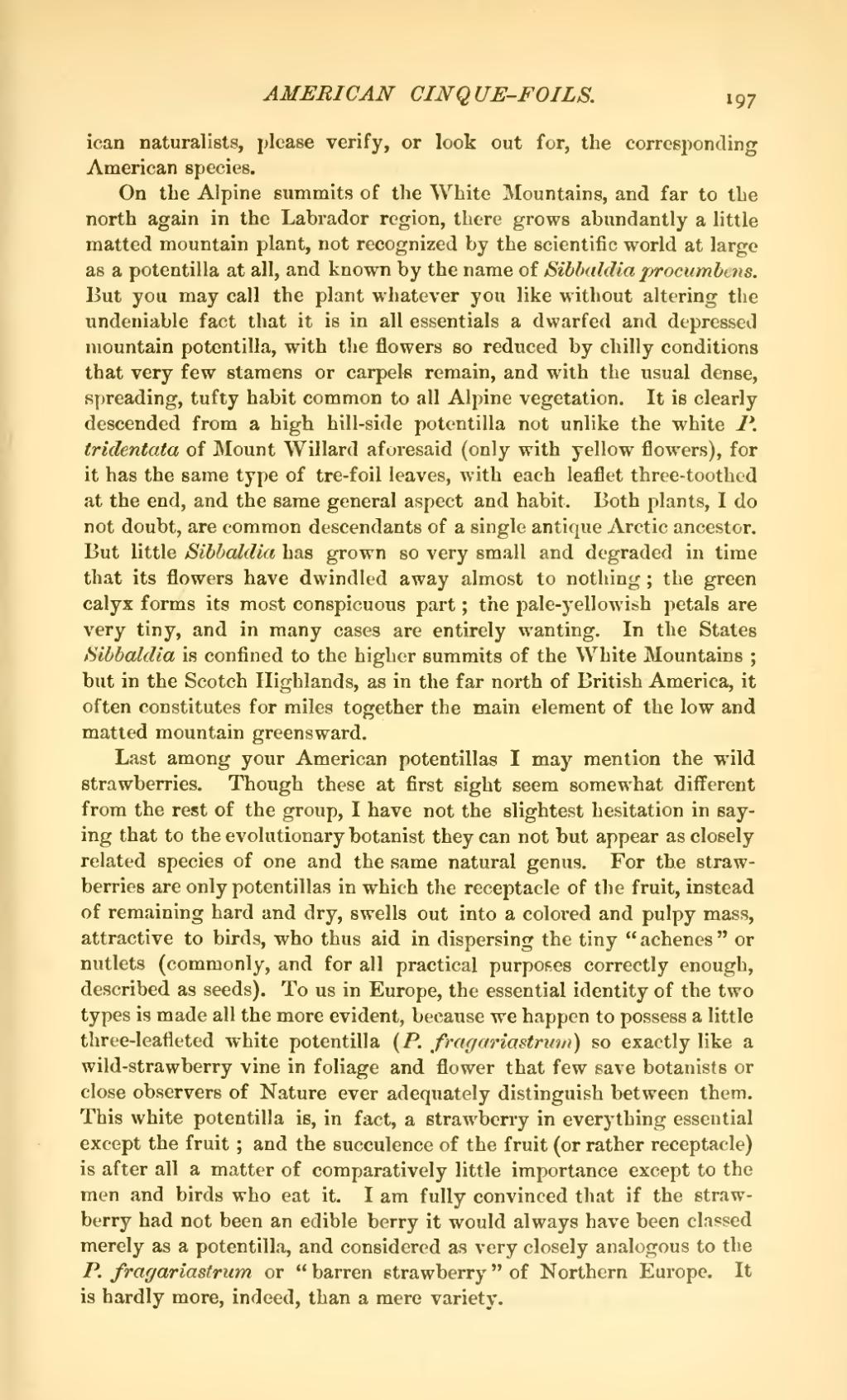ican naturalists, please verify, or look out for, the corresponding American species.
On the Alpine summits of the White Mountains, and far to the north again in the Labrador region, there grows abundantly a little matted mountain plant, not recognized by the scientific world at large as a potentilla at all, and known by the name of Sibbaldia procumbens. But you may call the plant whatever you like without altering the undeniable fact that it is in all essentials a dwarfed and depressed mountain potentilla, with the flowers so reduced by chilly conditions that very few stamens or carpels remain, and with the usual dense, spreading, tufty habit common to all Alpine vegetation. It is clearly descended from a high hill-side potentilla not unlike the white P. tridentata of Mount Willard aforesaid (only with yellow flowers), for it has the same type of tre-foil leaves, with each leaflet three-toothed at the end, and the same general aspect and habit. Both plants, I do not doubt, are common descendant? of a single antique Arctic ancestor. But little Sibbaldia has grown so very small and degraded in time that its flowers have dwindled away almost to nothing; the green calyx forms its most conspicuous part; the pale-yellowish petals are very tiny, and in many cases are entirely wanting. In the States Sibbaldia is confined to the higher summits of the White Mountains; but in the Scotch Highlands, as in the far north of British America, it often constitutes for miles together the main element of the low and matted mountain greensward.
Last among your American potentillas I may mention the wild strawberries. Though these at first sight seem somewhat different from the rest of the group, I have not the slightest hesitation in saying that to the evolutionary botanist they can not but appear as closely related species of one and the same natural genus. For the strawberries are only potentillas in which the receptacle of the fruit, instead of remaining hard and dry, swells out into a colored and pulpy mass, attractive to birds, who thus aid in dispersing the tiny "achenes" or nutlets (commonly, and for all practical purposes correctly enough, described as seeds). To us in Europe, the essential identity of the two types is made all the more evident, because we happen to possess a little three-leafleted white potentilla (P. fragariastrum) so exactly like a wild-strawberry vine in foliage and. flower that few save botanists or close observers of Nature ever adequately distinguish between them. This white potentilla is, in fact, a strawberry in everything essential except the fruit; and the succulence of the fruit (or rather receptacle) is after all a matter of comparatively little importance except to the men and birds who eat it. I am fully convinced that if the strawberry had not been an edible berry it would always have been classed merely as a potentilla, and considered as very closely analogous to the P. fragariastrum or "barren strawberry" of Northern Europe. It is hardly more, indeed, than a mere variety.

